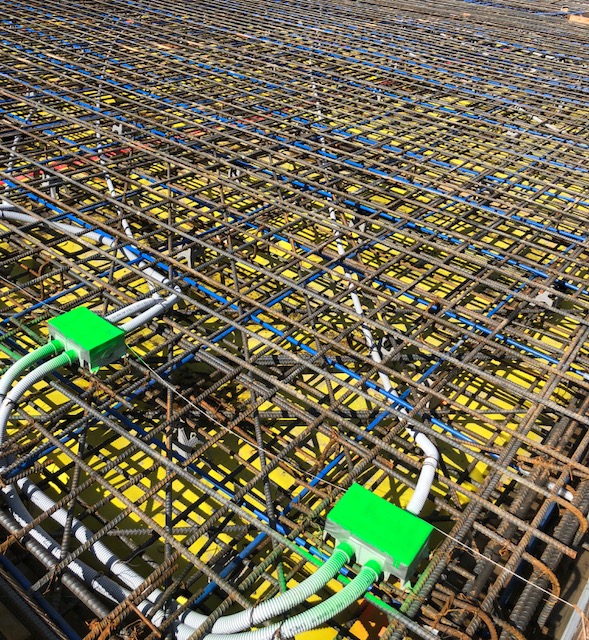The Advantages of RainierGPR Concrete Scanning for Construction Projects
The Advantages of RainierGPR Concrete Scanning for Construction Projects
Blog Article
Exploring the Trick Benefits of Concrete Scanning in Building Projects
In the world of modern-day building and construction techniques, the use of concrete scanning technology has actually arised as a crucial device for making certain job efficiency and architectural honesty. From enhancing safety and security measures to properly finding utilities concealed underneath the surface area, the benefits of concrete scanning are diverse. RainierGPR Concrete Scanning.
Improved Safety Steps
Utilizing innovative concrete scanning innovation boosts security measures on building and construction sites by offering precise detection of possible risks hidden beneath the surface. This modern technology makes it possible for construction groups to recognize rebar, channels, post-tension cables, and other obstructions prior to excavation or drilling, significantly lowering the danger of crashes. By pinpointing these elements specifically, employees can prevent destructive essential structural parts, hence avoiding injuries, hold-ups, and costly fixings.
Furthermore, concrete scanning plays a crucial role in ensuring the stability of existing structures during renovations or expansions. By spotting weaknesses, spaces, or wear and tear within concrete elements, engineers can resolve these problems proactively, improving the general safety and security and long life of the structure. This positive method not only minimizes the danger of architectural failings yet likewise minimizes the capacity for crashes triggered by unpredicted architectural shortages.
Essentially, the execution of concrete scanning innovation works as a positive precaution that safeguards both building employees and the structural integrity of structures, ultimately adding to the overall success and performance of building projects. - RainierGPR Concrete Scanning
Accurate Discovery of Energies
Concrete scanning technology facilitates precise recognition of below ground energies, improving building website security and performance. Precise discovery of utilities is critical in building projects to protect against expensive problems, job delays, and most notably, make certain the safety and security of employees and the general public. By making use of advanced scanning modern technologies such as ground-penetrating radar (GPR) and electro-magnetic induction, construction teams can draw up the location of buried pipes, cords, and various other utilities with high levels of precision.

Time and Expense Efficiency

Concrete scanning modern technology allows construction groups to accurately locate rebar, post-tension cables, and various other embedded things within concrete frameworks. This specific information assists in staying clear of expensive blunders such as accidental damage to vital components during drilling, reducing, or coring tasks. In addition, by determining potential dangers beforehand, the requirement for costly repair work or remodel as a result of problems can be minimized, bring about set you back savings for the task.
Furthermore, the capability to promptly and properly identify energies underneath the surface without creating any kind of damages not just saves time yet additionally prevents costly interruptions to existing infrastructure. Overall, the time and expense efficiency advantages of concrete scanning make it an invaluable tool for improving building task administration and implementation.
Conservation of Structural Honesty
Maintaining the structural stability of buildings and infrastructure is critical in ensuring long-lasting stability and see here now safety. Concrete scanning plays a critical function in this preservation procedure by enabling building specialists to recognize prospective threats to the architectural integrity of a building or facilities prior to they escalate right into major issues. Through the usage of sophisticated scanning innovations such as ground-penetrating radar (GPR) and electromagnetic induction, building teams can non-invasively examine the problem of concrete structures, you can try this out find rebar, post-tension cables, and other ingrained components, and identify any kind of gaps, cracks, or deterioration within the concrete.
Improved Project Planning
In order to make certain the successful implementation of construction projects, careful focus to information and extensive planning are essential parts that stem from an extensive understanding of the structural conditions identified with concrete scanning. Enhanced job planning, helped with by concrete scanning, permits construction groups to preemptively attend to potential difficulties, allocate resources more effectively, and develop sensible timelines. By accurately identifying the place of rebar, post-tension cords, and various other ingrained things within concrete frameworks, job managers can develop a lot more specific building plans that reduce the risk of expensive errors or delays. Furthermore, the data obtained from concrete scanning makes it possible for stakeholders to make educated choices relating to architectural adjustments, restorations, or developments, causing smoother job transitions and improved general task end results. Inevitably, integrating concrete scanning into the project planning phase enhances control among staff member, cultivates proactive problem-solving, and adds to the successful distribution of building projects within budget plan and timetable restraints.
Final Thought
Finally, concrete scanning uses numerous benefits in building and construction tasks. By improving precaution, accurately detecting utilities, enhancing time and expense performance, maintaining structural integrity, and assisting in task planning, concrete scanning confirms to be a crucial device for effective task implementation. Its ability to minimize threats, increase efficiency, and make certain project integrity makes it an indispensable property for building professionals.
In the realm of modern construction techniques, the application of concrete scanning technology has actually emerged as an essential device for guaranteeing task efficiency and architectural integrity.Concrete scanning modern technology enables building and construction groups to accurately situate rebar, post-tension cables, and other ingrained objects within concrete frameworks. Via the use of advanced scanning technologies such as ground-penetrating radar (GPR) and electro-magnetic induction, building and construction groups can resource non-invasively evaluate the problem of concrete frameworks, locate rebar, post-tension cables, and other embedded elements, and determine any type of voids, fractures, or wear and tear within the concrete.
In order to make sure the effective implementation of building and construction projects, precise interest to information and extensive preparation are important parts that stem from a comprehensive understanding of the structural conditions determined via concrete scanning. Ultimately, integrating concrete scanning right into the job preparation phase enhances control among group members, cultivates proactive problem-solving, and contributes to the successful distribution of building and construction tasks within spending plan and timetable constraints.
Report this page